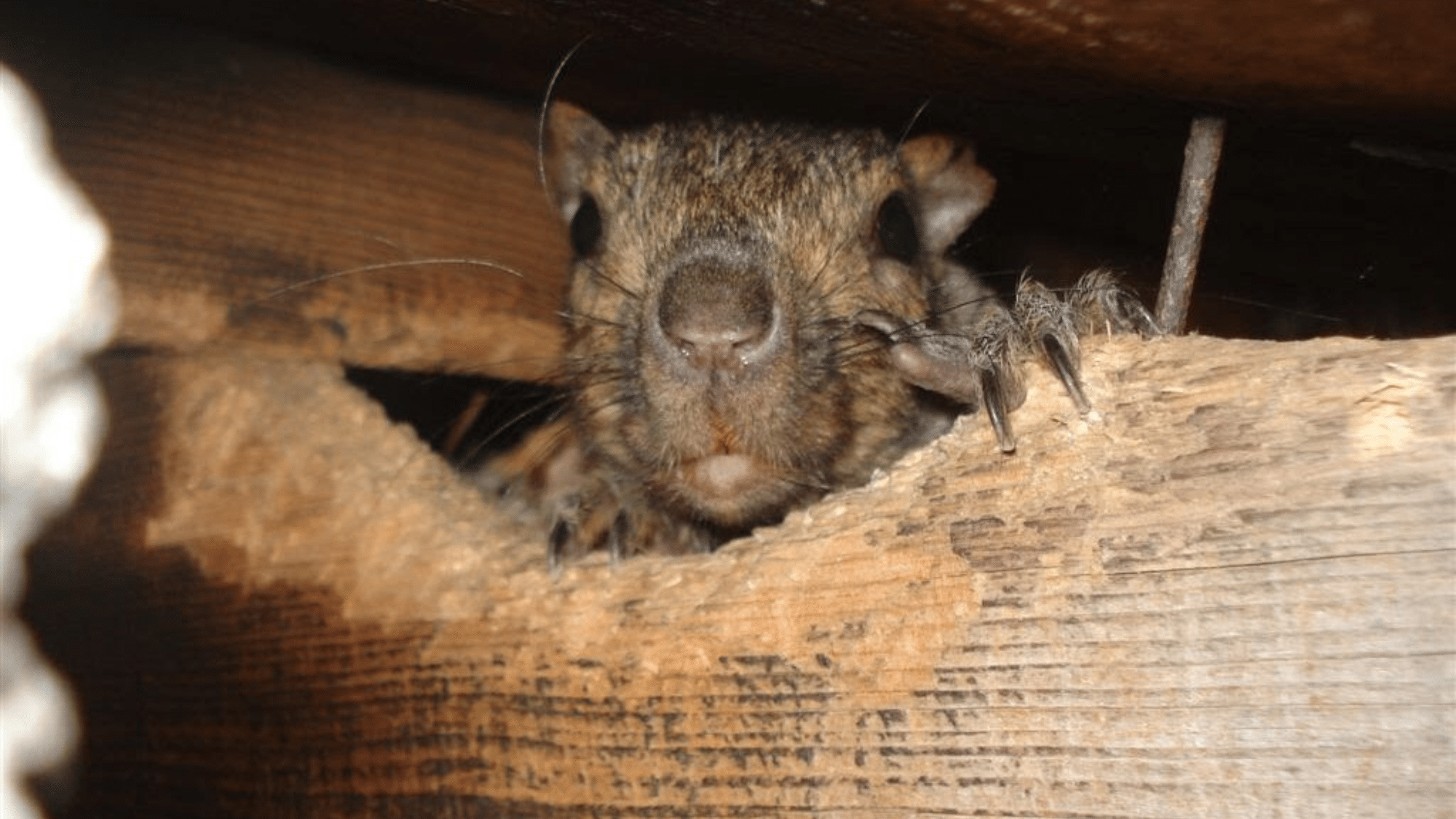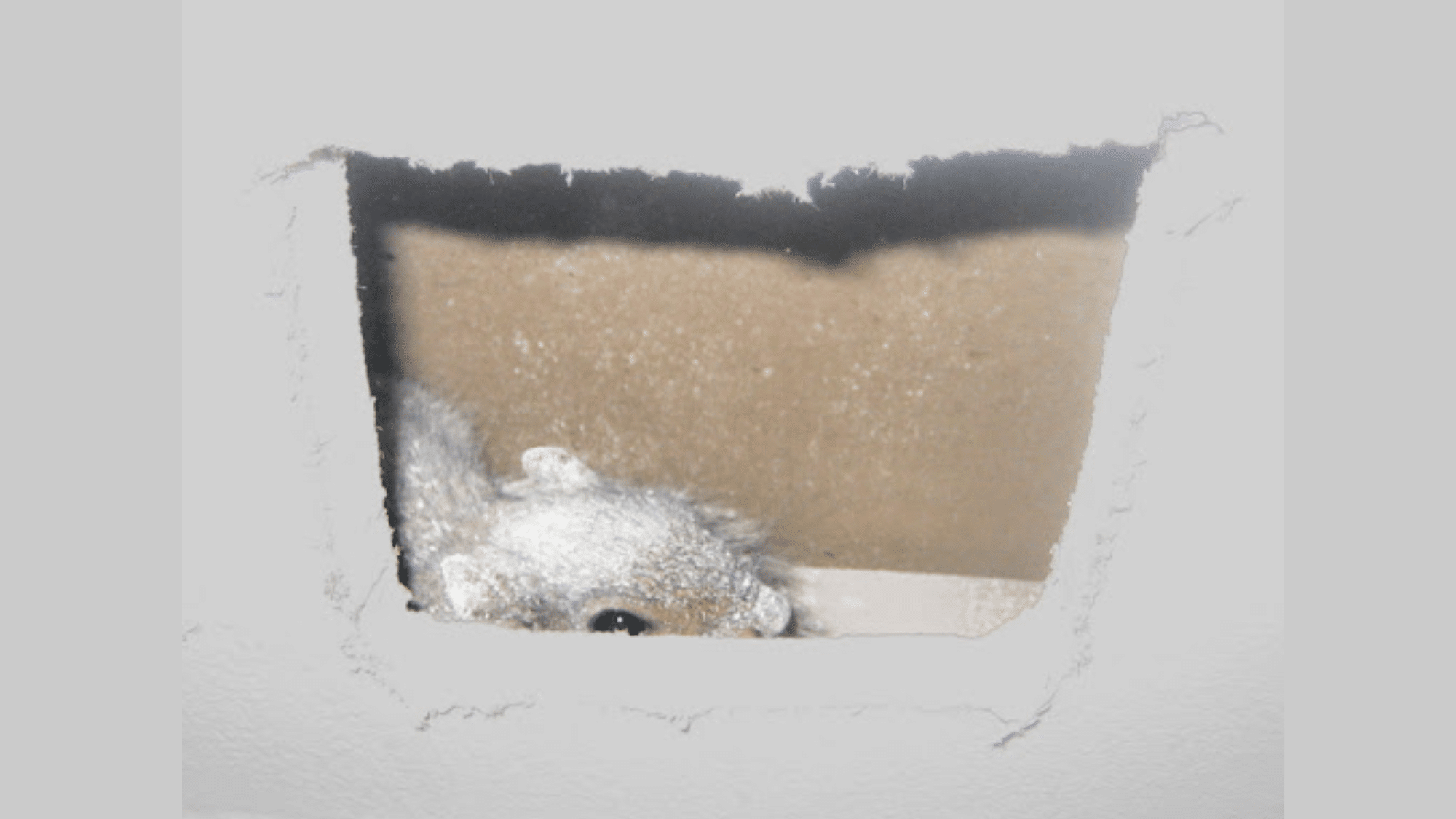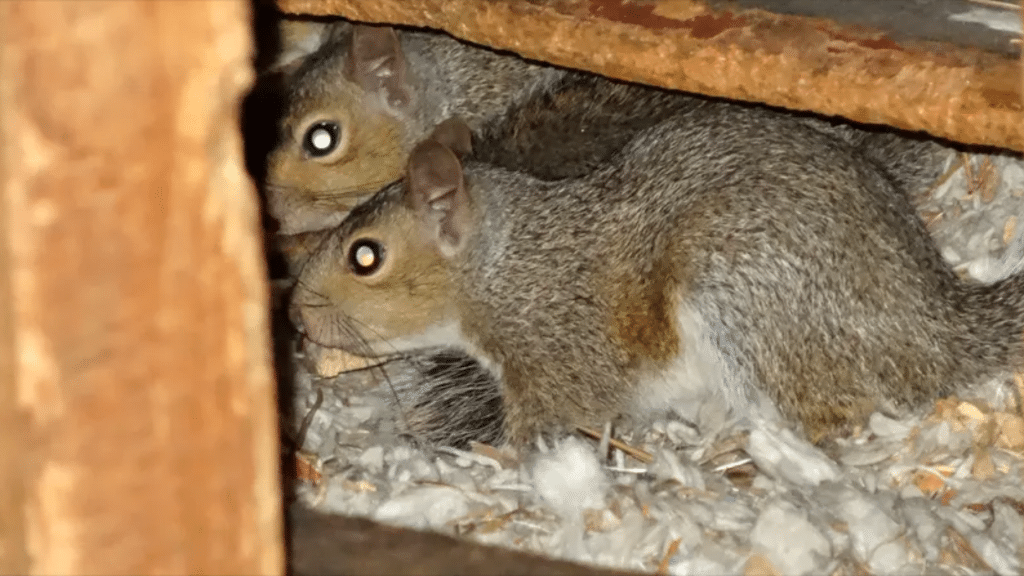Hearing scratching sounds from inside your walls? Squirrels might be the culprits. These small, furry creatures often seek warm, safe spots to build nests, and house walls offer perfect shelter.
Most homeowners notice this problem during the fall and winter months, when squirrels seek out. The secret to handling this situation lies in understanding why it happens in the first place.
This guide will examine the squirrel in the wall problem and equip you with the knowledge to address this common household issue.
Why Do Squirrels Enter Wall Cavities
Squirrels access walls through tiny openings – gaps as small as two inches around roof edges, vents, or pipes will do.
They choose walls for simple reasons: protection and comfort. Wall spaces stay at good temperatures year-round and keep them safe from predators.
Female squirrels particularly seek these spots to have babies. The hidden, quiet nature of walls makes them perfect nurseries.
Cold weather drives these animals to seek out warm spots, making your home an especially attractive option during the winter months.
Knowing how and why they enter helps fix the real problem, not just the signs.
Identifying Squirrel Activity in Walls

How can you tell when squirrels have made themselves at home inside your walls? The signs are often clear once you know what to look for.
Listen carefully during early mornings and late afternoons. Squirrels are most active at these times. You might hear running, scratching, or gnawing sounds.
Visual clues exist outside your home, too.
Check for:
- Small holes (about 2-3 inches) near rooflines or foundations
- Chewed wood or damaged siding
- Bits of insulation were pulled outside
- Squirrel droppings near possible entry points
The smell can also give them away. A musty odor might develop from nesting materials or waste products if squirrels have been present for some time.
Identifying these hints early enables faster action before significant damage occurs.
Methods to Remove Squirrels from Walls
Removing wall-dwelling squirrels requires patience and the right approach. Several methods are efficient, depending on your specific situation.
| Solution | Description |
|---|---|
| One-Way Exclusion Doors | Special devices that allow squirrels to exit but prevent them from returning. Place these at the main entry points after sealing all other openings. |
| Sound | Portable radios tuned to talk stations or devices emitting high-frequency sounds can disturb squirrels, making them leave the area. |
| Light | Bright lights directed into attic spaces make areas less appealing to squirrels for nesting. |
| Professional Wildlife Services | Experts with specialized tools and knowledge of squirrel behavior offer guaranteed results when DIY methods fail. |
| Live Traps | Humane traps baited with nuts or seeds to catch squirrels without harm. Place traps near entry points or in attics connected to infested walls. |
| Baby Squirrels | Avoid sealing walls during breeding seasons (spring and fall) without ensuring that all squirrels have exited, as baby squirrels need special care. |
Preventing Future Squirrel Infestations in Walls

Once squirrels have been removed, prevention becomes the next crucial step.
Here’s how to keep them from returning:
- Complete a full home inspection focusing on potential entry points
- Seal small gaps with caulk or expanding foam
- Use metal materials (steel wool, hardware cloth) for larger openings
- Trim tree branches that come within 8-10 feet of the house
- Install protective guards on vents and other necessary openings
These steps create barriers that deter squirrels from considering your home a potential nesting site.
Dealing with Damage Caused by Squirrels in Walls
Squirrels don’t just live in walls, and they often leave destruction behind. Addressing this damage promptly prevents more significant problems later.
Common damage includes:
- Chewed electrical wiring (fire hazard)
- Torn insulation (energy efficiency loss)
- Soiled drywall and wood (health concerns)
- Damaged HVAC ducts (system problems)
- Gnawed structural elements (safety issues)
Begin repairs by inspecting all wiring in the vicinity of the affected areas. Look for bare wires or chewed insulation. Hire an electrician if any signs of wire damage appear.
Inspect structural elements like joists, rafters, and support beams. Even small chew marks can weaken these important components.
For extensive problems, bringing in restoration professionals ensures proper cleanup and repair, especially when dealing with potential health hazards.
Conclusion
Squirrels in walls need quick attention before damage worsens. They enter through tiny gaps seeking shelter, but leave destruction behind.
Your next step? Inspect your home’s exterior for gaps and nearby trees that could provide access routes.
Taking action now stops problems later and keeps these creatures in their natural habitat, not yours. A squirrel-free home means peace of mind and protection for your property.















